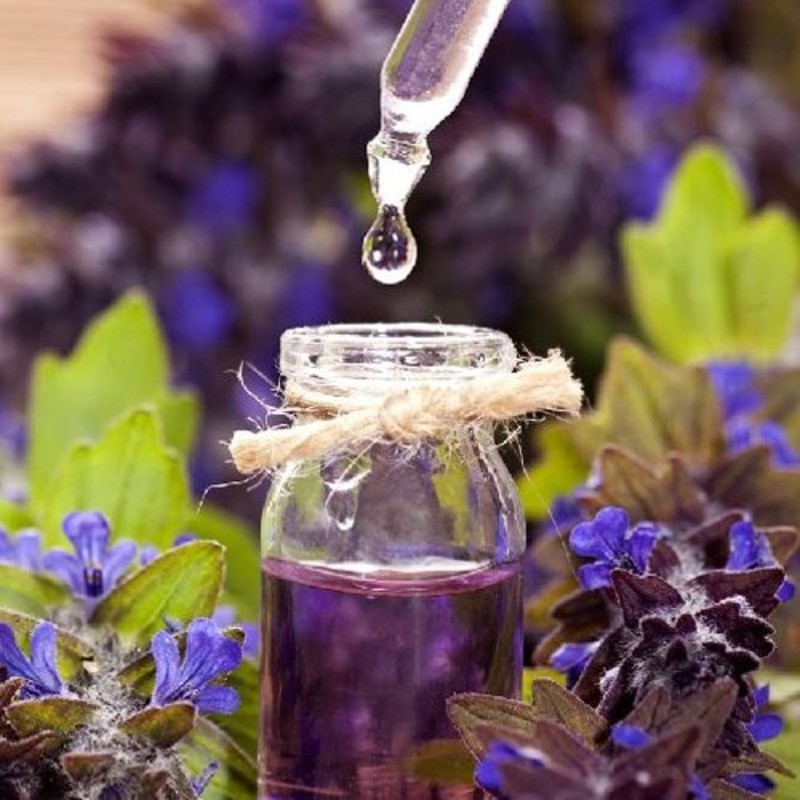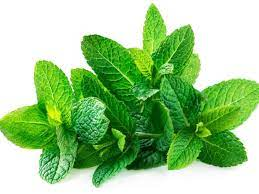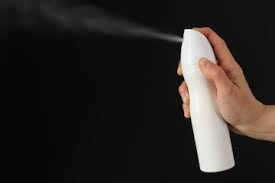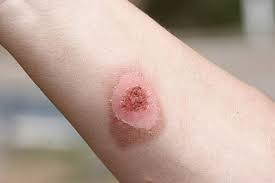The Complete Beginner's Guide to Essential Oils for Health and Wellness
Table of contents
Introduction
- Brief history and overview of essential oils
- Summary of common health benefits and uses
II. Getting Started with Essential Oils
- Understanding purity and quality
Essential oil safety tips
- Best oils for beginners
III. Everyday Uses for Common Essential Oils
- Lavender
- Lemon
- Tea tree
- Peppermint
- Eucalyptus
Other popular oils
IV. Application Methods
- Inhalation
- Topical
- Diffusers
- Neat vs. diluted use
V. Essential Oil Remedies for Health Conditions
- Stress relief
- Improved sleep
- Headaches
- Digestion
- Boost immunity
- Skin irritation
- Congestion
- Other common uses
VI. Recipes and Blends
- Carrier oils
- Roller bottles
- Diffuser blends
VII. Final Tips and Precautions.
Introduction
Essential oils have become an increasingly popular natural remedy for improving health, wellness, and quality of life. Derived from the leaves, stems, flowers, bark, roots, or other parts of plants, essential oils offer a wide range of potential benefits. From relaxing stress to soothing muscle pain, essential oils provide an all-natural way to care for our bodies.
In this comprehensive guide, we’ll explore everything a beginner needs to know to safely start using essential oils for better health. You’ll learn how aromatherapy works, oil safety tips, the top oils for beginners, and effective application methods. We’ll also dive into specific remedies for conditions like headaches, insomnia, nausea, and more. By the end, you’ll be ready to create custom blends and harness these powerful plant essences for improved well-being.
So whether you’re completely new to essential oils or looking to expand your knowledge, read on to unlock the world of natural healing with essential oils!
Getting Started with Essential Oils
Before diving into all the ways essential oils can benefit your health, let’s start with some fundamental information and safety tips for using them properly.
Understanding Purity and Quality
Not all essential oils are created equal when it comes to purity and potency. No official regulations govern essential oil production, so it’s important to source your oils from ethical suppliers. Look for oils that are:
- 100% pure and undiluted
- Unadulterated with no synthetic additives
- Steam distilled or cold pressed from named plant species
High-quality oils will list the botanical species on the label along with the country of origin. Avoid vague descriptions like “blend” or “perfume oil”. Seek out independent certification like USDA Organic when possible. Reputable suppliers will also provide testing documentation to verify purity.
When sourcing essential oils, quality matters for both safety and effectiveness. Do your homework to find a trusted supplier of high-quality, therapeutic-grade essential oils. Price can indicate purity, with higher-cost oils typically superior.
Essential Oil Safety Tips
Used correctly, essential oils can be a safe, natural health supplement. However, they are highly concentrated and require proper precautions:
- Perform a skin patch test before widespread use to check for allergies.
- Avoid ingesting oils unless clinical-grade. Some can be toxic if swallowed.
- Read labels and warnings carefully for each oil before use.
- Keep oils out of reach of children and pets.
- Dilute with a carrier oil before topical use to prevent skin irritation.
- Avoid contact with sensitive areas like eyes, inner ears, and damaged skin.
When starting out with essential oils, consult reputable resources on the safety, contraindications, and effective dosage for each oil. Every oil has different considerations. With proper usage guided by research, essential oils can be an excellent addition to your wellness routine without adverse effects.
Best Oils for Beginners
The array of single oils and oil blends available today can be overwhelming. For beginners new to aromatherapy, we recommend starting with the following user-friendly essential oils:
Lavender: Soothing and relaxing for skin and mind. Helps reduce stress and anxiety.
Lemon: Uplifting citrus scent that energizes and improves mood. Antioxidant properties.
Tea tree: Cleansing and clarifying. Promotes clear skin. Boosts immunity.
Peppermint: Cools and invigorates. Aids digestion, headaches, and congestion.
Eucalyptus: Decongestant for colds and allergies. Reduces inflammation and improves respiratory conditions.
Those five oils offer versatility for a variety of common health uses. They make the perfect introductory set when building an essential oils tool kit. We’ll explore specific applications for each oil in detail later in this guide.
Everyday Uses for Common Essential Oils
Now that we've covered some essential oil basics, let's dive into the many ways they can be used to support wellness in your everyday life. Here are some of the top essential oils for common health needs:
Lavender
Lavender essential oil is renowned for its calming, soothing properties. It can be used to:
- Promote relaxation and sleep - Add a few drops to a warm bath or diffuse at bedtime to unwind.
- Soothe skin irritation - Apply diluted lavender oil to soothe minor cuts, burns, stings, or rashes.
- Reduce anxiety and stress - Inhale lavender oil directly or massage diluted oil onto pulse points.
- Alleviate headaches - Massage diluted lavender onto temples, forehead, and back of the neck.
- Treat insect bites - Mix with a carrier oil and apply to bug bites to reduce itching.
Lemon
Best known for its energizing citrus scent, lemon oil also provides these benefits:
- Boost mood - Inhale or diffuse lemon oil for a natural mood lift.
- Increase focus - Lemon oil's stimulating aroma improves concentration and alertness.
- Detoxify - Add lemon oil to water to purify and detox. Has antioxidant effects.
- Cleanse skin - Mix with a carrier oil to gently cleanse acne-prone skin.
- Freshen air - Diffuse in stale air to create a fresh, clean scent.
Tea Tree
With its cleansing, and clarifying properties, tea tree oil is highly versatile:
- Treat acne - Dab diluted tea tree oil onto pimples to disinfect pores.
- Soothe skin inflammation - Apply to irritated, inflamed areas to reduce swelling.
- Fight fungal infections - Mix with a carrier oil and apply to nails or skin to treat fungal overgrowth.
Heal cuts and scrapes- Combine with lavender oil to cleanse and disinfect minor wounds.
- Boost immunity - Add a few drops to a warm bath to support respiratory health.
Peppermint
One of the most popular essential oils, peppermint is renowned for:
- Easing headaches - Massage dilute peppermint oil onto the forehead, temples, and neck for headache relief.
- Aiding digestion - Take peppermint oil internally as directed to ease stomach upset.
- Increasing energy - Inhale invigorating peppermint oil before working out or any time you need a boost.
- Clearing congestion - Diffuse or inhale to open sinuses and relieve coughing.
- Soothe muscle soreness - Combine with a carrier oil for a cooling massage.
Application Methods
Once you have some therapeutic essential oils on hand, it's important to understand how to use them safely and effectively. Here are some of the most common ways to apply essential oils:
Inhalation
One of the easiest ways to use essential oils is to breathe them in. You can:
- Directly inhale the scent from the bottle
- Add to steaming water and inhale the vapor
- Use in a room diffuser to scent the air
- Apply to your palms, rub together, and inhale
- Spritz onto aromatherapy inhalers or cotton balls
Inhaling essential oils allows the aromatic compounds to enter your nasal passages and access the lungs and bloodstream for immediate effects. This makes inhalation ideal for conditions like congestion, anxiety, nausea, and more.
Topical
Many essential oils can be applied directly to the skin. Always dilute them first with a carrier oil like coconut, jojoba, or sweet almond oil. Common topical uses include:
- Massage oils for muscle relaxation and pain relief
- Targeted application for skin irritation, wounds, or pain
- Adding to baths to soak in the oil benefits
- Roller bottles for aromatherapy perfume and pulse points
Start with a 1% dilution, or 1 drop of essential oil per teaspoon of carrier, and increase concentration slowly as needed. Avoid sensitive areas.
Diffusers
Diffusers gently disperse essential oils into the air by atomization. This allows you to fill a room with the aroma. Add 5-10 drops of essential oil to the water-filled diffuser reservoir for 1 hour. Diffusion is ideal for:
- Disinfecting and purifying air
- Eliminating odors
- Creating ambiance with calming or uplifting scents
- Receiving aromatherapy benefits
Follow all diffuser instructions and safety guidelines carefully. Never diffuse for more than 1-hour, intervals.
Neat vs. Diluted Use
Essential oils are highly concentrated. Using them “neat”, or undiluted, may cause skin sensitization. However, some oils can be used directly on areas like pressure points if properly diluted:
- For adults, dilute with a carrier at 1% (6 drops per 1 ounce)
- For children above 2 years, dilute to 0.25-0.5% (3 drops per 1 ounce)
- For infants and toddlers, dilute to 0.5% (3 drops per 1 ounce)
When applying topically or diffusing around children, always exercise additional caution.
Using essential oils safely often comes down to proper dilution. When in doubt, mix oils with a carrier before topical application or diffusion. This allows you to unlock their benefits without adverse side effects.
Essential Oil Remedies for Health Conditions
One of the key benefits of essential oils is their wide range of therapeutic uses for common health conditions. Here are some top essential oil remedies:
Stress Relief
- Lavender - Inhale or apply diluted oil to pulse points
- Bergamot - Diffuse oil for calming aroma
- Clary sage - Add to bath or massage into shoulders
Improved Sleep
- Lavender - Diffuse at bedtime or spray on the pillow
- Cedarwood - Inhale or apply diluted to wrists
- Marjoram - Massage behind ears and bottom of feet
Headaches
- Peppermint - Massage diluted oil onto temples
- Lavender - Inhale or apply to the back of the neck
- Eucalyptus - Apply to the forehead for a cooling sensation
Digestion
- Ginger - Take internally as directed to ease nausea
- Peppermint - Massage diluted oil over the abdomen
- Fennel - Diffuse or rub over the stomach for gas relief
Immunity
- Lemon - Add to water or tea to support respiratory health
- Eucalyptus - Diffuse or inhale to clear nasal passageways
- Oregano - Take internally when directed for antioxidant benefits
Skin Irritation
- Lavender - Apply diluted oil to soothe minor burns, cuts, and stings
- Tea tree - Dab onto blemishes to disinfect and clear acne
- Bergamot - Combine with a carrier oil to calm eczema flare-ups
Congestion
- Eucalyptus - Diffuse or inhale to open blocked nasal passages
- Peppermint - Massage diluted oil over the chest, back, and throat
- Oregano - Add to tea or take as directed for sinus support
Recipes and Blends
While single oils have individual benefits, combining oils allows you to target specific conditions with greater potency. Here are some simple recipes and blends:
Carrier Oils - Always dilute essential oils before topical use with a carrier like jojoba, coconut, or almond oil. Great for massage.
Headache Relief - Mix 2 drops each peppermint, lavender, and eucalyptus with 1 Tbsp carrier oil. Massage onto temples, forehead, and neck.
Sleep Aid - Add 1 drop of lavender, cedarwood, and marjoram to the diffuser with water. Diffuse 30 minutes before bedtime.
Muscle Relaxer - Whisk 5 drops each lavender, sweet marjoram, and black pepper into 2 Tbsp carrier oil. Massage into sore muscles.
Stress Relief - Add 2 drops lavender, 1 drop bergamot, and 4 drops carrier oil into a roller bottle. Roll onto pulse points as needed.
Custom blends allow you to create specialized solutions. Always research oil interactions before combining and performing skin tests. While most complementary oils can be blended safely at the right ratios, approach cautiously ingesting any internal mixtures.
Final Tips and Precautions
While aromatherapy with essential oils provides a host of potential wellness benefits, it’s important to keep safety in mind:
- Dilute oils properly before use, especially when applying topically to of skin.
- Do not ingest oils unless they are of food-grade quality. Some oils can be toxic if swallowed.
- Conduct a patch test before widespread use to check for allergic reactions or skin sensitivity.
- Avoid exposure to sunlight after applying citrus oils like lemon, lime, and orange as they can cause photosensitivity.
- Use caution when diffusing around pregnant women, infants, children, and pets as they may be more sensitive.
- Be aware that improper use, ingestion, or dilution of some oils like wintergreen, eucalyptus, and peppermint may be hazardous in high concentrations.
- Store in dark glass bottles away from direct light exposure and heat to maintain efficacy.
While aromatherapy with essential oils is generally very safe, it’s important to carefully follow usage guidelines. When in doubt, consult a doctor or certified aromatherapist for guidance on the safest ways to leverage these powerful plant extracts for health.
Ready to Unlock the Benefits?
We hope this beginner's guide has helped demystify the world of essential oils for you. From understanding purity and safety to using common oils like lavender and lemon in your daily routine, you now have the basics to start safely incorporating essential oils into your wellness.
Remember to always carefully source, dilute, and handle these potent plant extracts. Used correctly and following proper precautions, essential oils can be an amazing chemical-free way to support whole body health. Now go take a deep breath, diffuse your favorite relaxing scent, and enjoy all the benefits these amazing essences have to offer!





































